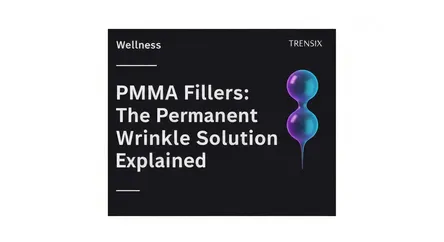Wellness
PMMA Fillers: The Permanent Wrinkle Solution Explained

Discover PMMA fillers, the semi-permanent injectable treatment offering a long-lasting solution for wrinkles and acne scars by stimulating collagen.
What is it?
Polymethylmethacrylate (PMMA) fillers are a type of semi-permanent to permanent dermal filler used in cosmetic procedures. They consist of tiny, biocompatible microspheres of PMMA suspended in a gel, which often contains collagen. When injected, the collagen provides immediate volume, while the PMMA microspheres remain under the skin indefinitely. These microspheres act as a scaffold, stimulating the body to produce its own natural collagen over time. This process provides long-lasting structural support to the skin. The only PMMA filler approved by the FDA is Bellafill®, used for treating nasolabial folds and certain types of acne scars.
Why is it trending?
The popularity of PMMA fillers is driven by a growing demand for cosmetic treatments with durable and long-lasting results. Unlike temporary hyaluronic acid (HA) fillers that last for 6-20 months, PMMA fillers can last for five years or more. This longevity appeals to consumers seeking a low-maintenance solution to wrinkles and volume loss, reducing the frequency of follow-up treatments. As a non-surgical option for achieving a more youthful appearance, PMMA fillers offer a convenient alternative to more invasive procedures, providing gradual, natural-looking improvements as the body builds its own collagen around the microspheres.
How does it affect people?
PMMA fillers provide immediate volume to treat medium-to-deep wrinkles, folds, and pitted scars, with continued improvement over several months as new collagen forms. While effective, there are risks involved. Common side effects are temporary and include redness, swelling, pain, or bruising at the injection site. More serious, though rarer, complications can occur, such as infection, lumps (nodules or granulomas), and filler migration. Unlike HA fillers, PMMA fillers cannot be dissolved and may require surgical removal if adverse effects occur. Therefore, it is crucial that the procedure is performed by a skilled and experienced professional to minimize risks.